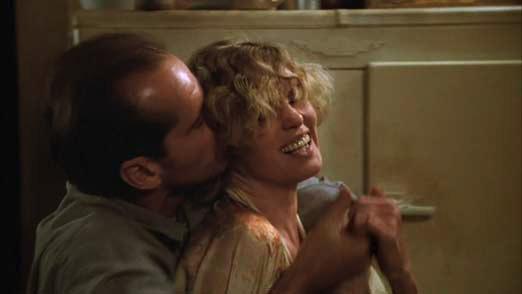Introduction
The more things change, the more they stay the same .
Thats a rough translation of an epigram from mid-19th century French writer Jean-Baptiste Alphonse Karr which obviously has resonance in the 21st century. And it can be applied directly to the motion picture rating system.
More than 30 years ago, in June 1981, I wrote this Deseret News story about movie ratings, and its still relevant. All you need to do is update the movie titles, keep in mind that the PG-13 rating was still three years away, and remember it would be another nine years before the X rating would be replaced by NC-17.
The wire-thin line that separates movies rated PG and R has been crossed over so many times in both directions that industry observers are questioning whether the rating system carries any validity at all. A recent nationally syndicated Knight-Ridder article expressed dismay that a single rating can include both Ordinary People and The Postman Always Rings Twice . Both films are rated R.
Ordinary People , which was a multiple Oscar-winner this year (1981), was rated R because of one particular profanity that automatically gets that rating. The word is used in an explosive, emotional pair of scenes, eight times in all, including once in a sexual context, but the film contains no nudity, no sex, no violence, and little other profanity.

Jack Nicholson and Jessica Lange in the 1981 remake of The Postman Always Rings Twice MGM |
The Postman Always Rings Twice has sexual scenes so explicit that the reviewer for Variety , the show business trade journal, wrote, If this is an R, the only X left is actual hard core. It also was very violent, the dialogue was almost constant profanity, and there was nudity, albeit fleetingly.
There are also PG-rated movies that once were R-rated or look like they still should be.
The same profanity that brought Ordinary People an R was used about four times in Inside Moves , a Christmas release last year (1980). That film was originally rated R, but the director asked the rating board for a reduced rating. The board agreed and it received a PG without any cuts. One day an R the next a PG. Inside Moves also contains quite a lot of other profanity and some violence.
These following four films, however, did not have to fight for PG ratings, and every one could easily have been rated R; The Competition , with a love-making scene between an unmarried couple that leaves little to the imagination; The Idolmaker , which, though it does not use the R-rated profanity, does use nearly every other sex-related profanity imaginable; Sphinx , which opens with the graphic depiction of a man, with ropes tied from his arms and legs to four horses, literally being torn apart; Tribute , which has a subplot about a prostitute being honored by her past customers, and a scene where she disrobes before Jack Lemmon in his apartment.
To understand just how subjective the rating system is, its important to realize that movies are rated by members of a board that is under the auspices of the movie industry.
The Classification and Rating Administration (CARA), which affixes the G, PG, R or X to movies released in the United States is under the direction of the Motion Picture Association of America (MPAA). It is composed of eight to eleven men and women who view movies and discuss them, casting votes to decide ratings. Its chairman, an MPAA employee, casts tie-breaking votes.
The criteria are simple: Movies are rated on the basis of content violence, profanity, sex, nudity, vulgarity, theme without regard to artistic quality or intent. The only firm rule concerns one sexually-based profanity that automatically gets an R; all else is on the basis of discussion and vote. Any film may be appealed, and if certain cuts are made, a rating may be reduced by the board. In some cases (as with Inside Moves , and a few years earlier with All the Presidents Men , The Front , and others), no changes are required, and a rating will still be reduced.
But the mind boggles at a system that puts a PG on the very violent Lion of the Desert and an R on the extremely tame Hopscotch ; or a PG on the very gruesome horror movie Road Games and an R on the light-hearted The Blues Brothers .
Perhaps, a closer-to-home example is the contrast between two films that are similar in theme. Kramer vs. Kramer , which has nudity, sex, and profanity, is rated PG; Ordinary People , with profanity only, is rated R.
Its been a gradual, creeping plague that has turned the rating system inside out. When films were first being rated, the criteria to distinguish a PG from an R were clearer. Then, one-by-one, certain films came along to challenge the systema partially nude lovemaking scene in Ryans Daughter , profanity in Patton , violence in Jaws each with scenes that broke down barriers to help material that had never been allowed in PG-rated movies before suddenly become acceptable.
Nowadays, any profanity except the one sexually explicit word referred to previouslyand sometimes even thatmay be heard in a PG film. Is that word any worse than repeatedly taking the Lords name in vain? Apparently, the rating board thinks so.
Meanwhile, G-rated films have become rare. The first year of the ratings, 1968, saw 141 G-rated movies, but the numbers have steadily decreased each year. Of 326 movies rated last year, only fifteen were rated G, and many of those were independent films, not major studio pictures.
The decline is due to a stigma that developed after a number of G movies failed to make money. The feeling spread that the rating implied to viewers that the films were too tame. (Some critics have suggested it is actually because those G movies were simply not good films.) So, producers decided to spice up their family fare by including language or edgy scenes to ensure a PG.
Of 326 movies rated last year, 129 were PG and 151 were R. In Salt Lake City this year, so far, thirty-nine PG-rated movies have been released, forty-eight R and only six rated G.
Despite the fact that they are clean films intended for the family, and that most parents would allow their children to see them, Superman II , Popeye , The Devil and Max Devlin , The Empire Strikes Back , and Little Miss Marker all wound up with PG ratings instead of Gsthe same rating received by the very violent Legend of the Lone Ranger and the very raunchy Airplane!
Though those directly connected with the rating system often assert that it works, and that families have gotten behind it, even CARA sees the weaknesses.
Ratings have some value as a general guide, but they should not be relied on wholly. More education about each film is necessary. Reading reviews in various publications and talking to friends who have seen specific films are useful in learning what movies should be seen. Another way is for parents to see a film themselves before allowing their children to do so.
So whats changed since 1981? Not much, really. Today, ratings come with brief explanations, and there is a vast array of websites that can provide you with more specific details about movie content. But the only real change of substance is the titles.
In 2011, it was The Kings Speech and Win Win that received R ratings for the use of a few f-words, which seemed extreme since it put those films in the same category as the years really hard R-rated releases: Bridesmaids , The Hangover - Part II , The Girl with the Dragon Tattoo , Scream 4 , The Rum Diary , Horrible Bosses , etc.











